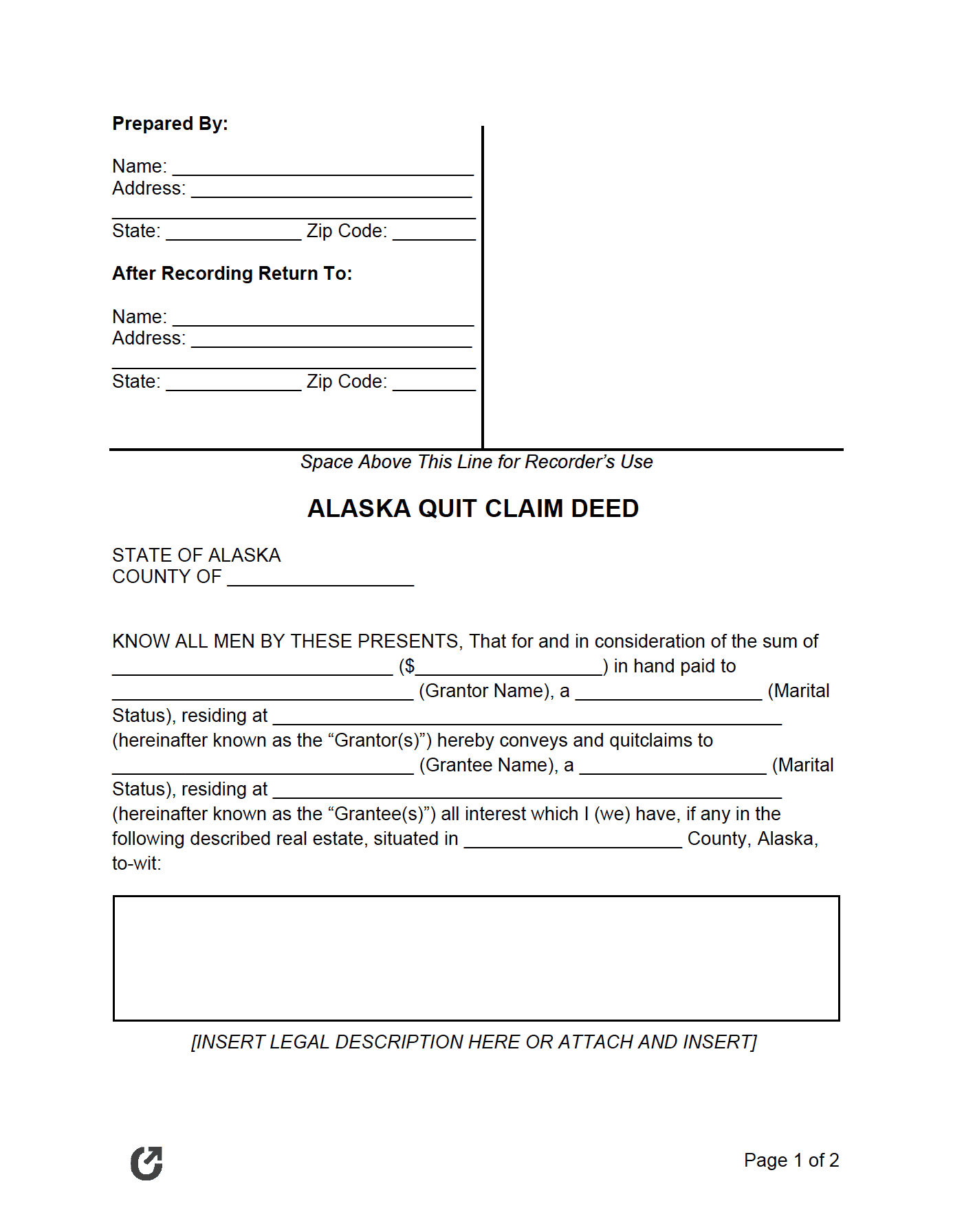Alaska Quit Claim Deed Form
An Alaska quit claim deed is the official state deed form for transferring property. It’s also useful for fixing defects in title due to the ease the form can be completed. With the document, the person transferring the property (grantor) provides no warrants to the title. While the recipient (grantee) can conduct a title search, it’s not a requirement for the deed to go into effect. This makes the form easier to use, yet more of a liability when compared to other deed types.
Laws
|
How to Write
Step 1 – Download
Save the deed in PDF or Word (.docx) format.
Step 2 – Preparer & “Return To” Recipient
The preparer is the person or company completing the deed. It can be the grantor, an attorney, or another trusted person. The preparer’s full name and address will need to be entered in the top-left corner.
The recipient (“return to” section) is the person or company that receives the deed after recording takes place. This is commonly the name and address of the grantee(s).
Enter the full name(s) of the Grantor(s) and their address.
Step 3 – Consideration (i.e., Payment)
Enter the amount of money the grantee(s) paid to the grantor(s) for the property. The first field is for entering the amount word-for-word, and the second field is for inputting the amount as a number. If the property was a gift, consideration of “$1.00” can be entered.
Step 3 – Party Names
Enter the names, marital statuses, and mailing addresses of both the grantor(s) and grantee(s).
Step 4 – Real Property
To sufficiently describe the property being transferred, enter the name of the county the property is located in, followed by the legal description of the real estate (note: the following information can be copied from the last deed, as the information should not have changed):
- Lot #
- Block #
- Address
- Plat #
- Recording District
- Judicial District
Step 6 – Signatures + Notarization
The grantor(s) need to wait to sign the deed until they are directed to do so by a Notary Public. Once notarized, the deed can be brought to the local district recorder to be placed in the records.
